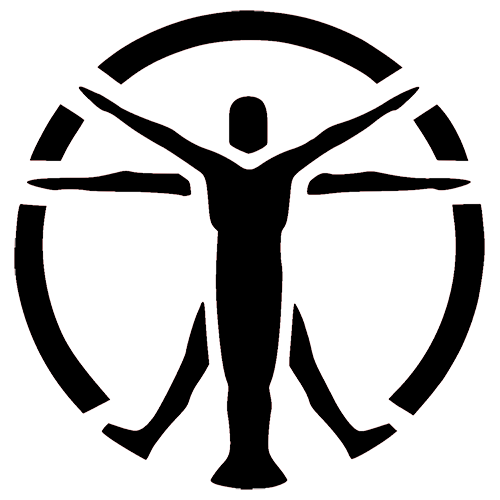We all know how important it is to look after our health and responsibly work on our wellbeing. Before you decide to undergo any treatment, it is essential to understand what it is and how it works. In this article, we’ll explore the mechanisms of red light therapy and the red light therapy pros and cons to help you make an informed decision.
What Is Red Light Therapy Pros and Cons and How Does It Work?
Red light therapy is used for therapeutic purposes and utilizes red and near-infrared (NIR) light to treat the body at the cellular level. It is also called low-level laser therapy (LLLT), low power laser therapy (LPLT), photobiomodulation (PBM), and LED light therapy.
Light in the red and near-infrared wavelength range penetrates deeper into the skin than other light sources in the spectrum. It penetrates deep into the cell and stimulates the production of energy. This improves cellular function and provides many benefits. Yet, there are both pros and cons of red light therapy treatment. We will discuss the positives of the therapy in the next section.
Benefits Of Red Light Therapy
Red light therapy is becoming more and more popular every year. This is not unusual considering its extensive areas of application and advantages over other methods of treatment.

Efficiency Of Red Light Therapy
The main advantage of red light therapy is its effectiveness in various fields. It has been used in medicine for over 30 years and is now actively being researched to demonstrate its effectiveness in other applications. Let’s discuss some of the areas in which it has clinically been proven effective.
Red light therapy for the skin
Due to its properties, red light therapy is beneficial for the skin and helps with some skin problems. Here are the most common ones:
- Red and near-infrared light has been clinically proven effective in reducing fine lines, wrinkles, skin roughness, and in increasing collagen density in the intradermal tissue [1].
- RLT limits the inflammatory response and reduces oxidative damage, and therefore, it is actively used in the treatment of inflammatory diseases such as psoriasis, rosacea, acne, etc. [2].
- LLLT has shown positive results as a prophylactic method of altering the healing process to prevent excessive scarring [3].
Find more about light therapy treatment to get rid of acne.
Red light therapy for hair growth
Relatively recently, serious research has begun on LLLT for the treatment of androgenic alopecia. Several studies have already proven that LLLT is effective and safe in stimulating hair growth in both men and women [4, 5].
Red light therapy for weight loss and cellulite
LLLT visibly reduces the volume in overweight people, and this is not due to simple redistribution of fluid or fat [6, 7]. When combined with exercise, it has the additional effect of improving body composition and reducing the appearance of cellulite [8, 9].
Red light therapy for pain relief
Red light therapy does not block the perception of pain; instead, it combats it by promoting optimal cell function.
Here are just a few cases in which red light therapy has proven to be effective:
- LLLT for low back pain associated with intervertebral disc degeneration and chronic low back pain [10, 11].
- Red LED photobiomodulation against neuropathy [12,15,20].
- LLLT against pain in patients with musculoskeletal disorders and osteoarthritis of the knee joint [13,14].
Red light therapy for improved cognitive function, sleep, and depressed mood
Light therapy is used for disorders of the circadian rhythm of sleep, dementia, mood disorders, and insomnia [23].
Photobiomodulation has demonstrated effects on improving cognitive function and reducing outbursts of anger and anxiety. These results stimulate research on the effects of photobiomodulation for the treatment of Alzheimer’s disease [16].
Light therapy reduces depressive mood in patients with seasonal mood disorders and with severe depressive disorders [17, 18].
These are the main, but, not all of the applications of red light therapy. Our extensive research on experimental applications of red light therapy can be found here.
Safety
In addition to its effectiveness to address various problems, red light therapy is safe. It is a non-invasive, painless, natural, drug-free therapy that is approved by the FDA (Food and Drug Administration). No recovery time is required after treatment and you can continue with your daily activities immediately after treatment
Red light therapy devices do not have high power and do not contain ultraviolet rays. They are suitable for all skin tones and skin types. Therefore, the skin does not tan or suffer burns or other damage under the influence of red light therapy, unlike, for example, tanning beds. On the contrary, red light therapy is effective against skin aging and promotes healing. However, you should protect your eyes from the light with special safety glasses.
Because of its safety, red light therapy can even be a salvation for pregnant women. Pregnant are prone to acne due to hormonal fluctuations, and many oral medications (such as tetracycline) are dangerous for them. Red light therapy is safe and effective even for women who are pregnant and breastfeeding [22].
Use At Home
Red light therapy is often a lengthy process, especially when treating skin disease, hair loss, chronic pain, etc. If you go to clinics, fitness centers, or a dermatologist’s office it will be time-consuming and noticeably costly (one session costs $20 on average).
But because of its safety and ease of use, there are several high energy red light devices available for home use. Purchasing a quality LED device will pay for itself many times over in the long run.
How to choose a red light device for home use.
In the clinic, gym, or home: Where is the best place to get red light therapy?
Disadvantages of Red Light Therapy
In addition to the advantages of red light therapy, there are some disadvantages to be aware of.

Duration (time and money consuming)
It is important to understand that red light therapy is not a one-time procedure. Of course, red light therapy can have a fast effect, for example, for seasonal mood disorders. A noticeable reduction in depressed mood is seen immediately after 1 hour of light therapy. But this has only a short-term, one-time effect.
Everything is individual for each case. In some cases, treatment lasts from one to three months with several weekly sessions, and in some cases, ongoing maintenance therapy may be needed to maintain the results.
It takes a lot of time to come and go through therapy, and money to pay for all the sessions, and insurance companies do not currently cover this type of treatment. But it can be optimized (see the point about home use).
RLT often acts as a complementary treatment. In the case of serious illness, it should be used in conjunction with the primary treatment prescribed.
Contraindication and short-term side effects
There are no serious negative effects of red light therapy and there are few contraindications. But there are some categories of people who should be cautious about red light therapy:
- Light sensitivity. People react differently to light therapy devices. If you do not know how your skin reacts to light therapy, it is better to do a skin sensitivity test before therapy to avoid red light therapy dangers. If the red light is too intense for your body, the glare may cause you some short-term effects. Such as:
Usually, the symptoms go away after a few hours or days. To reduce the occurrence of such side effects, it is important to determine the appropriate dose and timing of light therapy.
- Preparations that cause photosensitivity. Some antibiotics and medications (such as lithium, melatonin, phenothiazine antipsychotics, etc.) make you particularly sensitive to light. Therefore, if you are taking any medications, it is best to consult with your doctor before you consider any treatment.
- Bipolar disorder. Light therapy is used to treat seasonal and non-seasonal depression and may also be effective for bipolar disorder [24, 25]. But people with bipolar disorder are very sensitive to light therapy and in some cases, the therapy may cause symptoms of mania. Therefore, a person with bipolar disorder should discuss this thoroughly with their doctor before receiving light therapy.
- Retinal diseases or diabetes. Studies [19] have shown that red light increases sensitivity to color contrast and improves the ability to see in low light conditions, but people with any retinal disease or diabetes are at risk for eye damage.
Therefore, personal protective equipment for photodynamic therapy should be used during treatment, which should include protective eyewear.
- Skin cancer. Red light therapy in wound healing stimulates skin cell growth. Therefore, there are concerns that it may promote the growth of malignant neoplasms if present.
Although a 2011 study of 330 tumors in mice [21] showed that red light therapy was safe for them and did not promote tumor growth, it is still insufficient evidence, and doctors are often hesitant to recommend such treatment.
📌 Before treating a disease with LED therapy, first, consult and confirm your diagnosis with your doctor.
Insufficient In-Depth Clinical Data
Lack of specific guidelines
With regular use, the therapy can produce several improvements, but it should not be considered a cure. At this point, red light therapy is still a fairly new procedure with not enough research to be fully incorporated into formal treatment.
The scientific community has not yet developed standardized testing parameters and prescriptions for the use of red light to treat certain conditions. Physicians may recommend the frequency and duration of therapy, but individual sensitivities and needs will vary. In-depth studies are still limited and ongoing.
Insufficient clinical data on long-term effects
No studies have warned against long-term treatment, as no serious long-term side effects have been found during or immediately after treatment. But there have been no large-scale, focused studies on this issue yet. So some experts say more research may be needed.
Besides, red light therapy still has insufficient data on its long-term effects. So far, no serious side effects of light therapy have been found. They may not exist, but reliable clinical trial data is needed.
Summary
Do not take red light therapy as a quick miracle pill. According to the results of many studies, this therapy already has a lot of evidence about its effectiveness and safety. However, it’s important to note that it’s not a quick fix and has both red light therapy pros and cons. You should keep in mind that it is often a long-term process and is often used as an additional treatment to the main prescribed treatment.
Red light therapy is very effective in some conditions: improving the health and youthfulness of the skin, reducing pain, activating wound healing, stimulating hair growth, helping to lose weight, and several other concerns.
Due to its length of treatment, it can be time-consuming and expensive. But because it is non-invasive, painless, chemical-free, drug-free, and easy to use treatment, you can get light therapy sessions at home while saving a significant amount of money and time.
Only minor short-term side effects have been found with red light treatment when the red light was too intense or patients had contraindications (such as photosensitivity, taking light sensitizing drugs, and certain diseases). These side effects are usually eye strain, temporary headaches, and mild visual side effects. They do not indicate any permanent changes and go away after a few hours or days.
So far, no serious side effects of light therapy have been found. They may not be present, but this has not been confirmed by reliable long-term clinical studies. But considering the often serious side effects of many medications, red light therapy is a safer and effective method.
FAQ
🔍 What is red light therapy?
Red light therapy, which is also referred to as low-level laser therapy (LLLT), is a therapeutic technique that exposes the skin to red light and triggers the body’s healing processes, resulting in several health benefits.
❓ What are the benefits of red light therapy?
Red light therapy has potential benefits that include improved skin health, pain relief, enhanced mood, reduced hair loss, helped with weight loss and cellulite problems, as well as wound healing.
👀 Is red light therapy safe for all skin types?
Yes, red light therapy is generally safe for all skin types. However, people with sensitive skin should take extra care when using it, as the light can sometimes cause irritation or dryness.
⏰ How long does a red light therapy session typically last?
Red light therapy sessions can vary in length depending on the specific device and disease itself. Generally, treatment can last from a few to 30 minutes.





